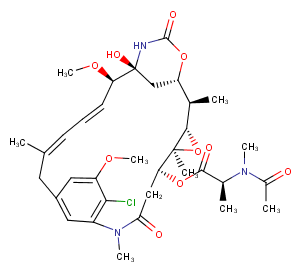Maytansine
| Code | Size | Price |
|---|
| TAR-T21351-5mg | 5mg | £120.00 | |||||||||||||||||||||||||||||||||||||||||||||||||||||||||||||||||||||||||||||||||||||||||||||||||
| Special offer! Add £1 to your order to get a TargetMol CCK-8 Kit. Read more here. | |||||||||||||||||||||||||||||||||||||||||||||||||||||||||||||||||||||||||||||||||||||||||||||||||||
Quantity:
| TAR-T21351-1mL | 1 mL * 10 mM (in DMSO) | £146.00 | |||||||||||||||||||||||||||||||||||||||||||||||||||||||||||||||||||||||||||||||||||||||||||||||||
| Special offer! Add £1 to your order to get a TargetMol CCK-8 Kit. Read more here. | |||||||||||||||||||||||||||||||||||||||||||||||||||||||||||||||||||||||||||||||||||||||||||||||||||
Quantity:
| TAR-T21351-10mg | 10mg | £149.00 | |||||||||||||||||||||||||||||||||||||||||||||||||||||||||||||||||||||||||||||||||||||||||||||||||
| Special offer! Add £1 to your order to get a TargetMol CCK-8 Kit. Read more here. | |||||||||||||||||||||||||||||||||||||||||||||||||||||||||||||||||||||||||||||||||||||||||||||||||||
Quantity:
| TAR-T21351-25mg | 25mg | £262.00 | |||||||||||||||||||||||||||||||||||||||||||||||||||||||||||||||||||||||||||||||||||||||||||||||||
| Special offer! Add £1 to your order to get a TargetMol CCK-8 Kit. Read more here. | |||||||||||||||||||||||||||||||||||||||||||||||||||||||||||||||||||||||||||||||||||||||||||||||||||
Quantity:
Prices exclude any Taxes / VAT
Overview
Regulatory Status: RUO
Shipping:
cool pack
Storage:
-20℃
Images
Documents
Further Information
Bioactivity:
Maytansine, an ansamycin antibiotic originally isolated from the Ethiopian shrub Maytenus serrata, inhibits the assembly of microtubules by binding to tubulin at the rhizoxin binding site.
CAS:
35846-53-8
Formula:
C34H46ClN3O10
Molecular Weight:
692.2
Pathway:
Microbiology/Virology; Cytoskeletal Signaling
Purity:
0.9962
SMILES:
CO[C@@H]1C=CC=C(C)Cc2cc(OC)c(Cl)c(c2)N(C)C(=O)C[C@H](OC(=O)[C@H](C)N(C)C(C)=O)[C@]2(C)O[C@H]2[C@H](C)[C@@H]2C[C@@]1(O)NC(=O)O2
Target:
Microtubule Associated; Antibiotic
References
1. Kusari S, Lamsh?ft M, Kusari P, Gottfried S, Z?hlke S, Louven K, Hentschel U, Kayser O, Spiteller M. Endophytes are hidden producers of maytansine in Putterlickia roots. J Nat Prod. 2014 Dec 26;77(12):2577-84.
2. Tang X, Dai H, Zhu Y, Tian Y, Zhang R, Mei R, Li D. Maytansine-loaded star-shaped folate-core PLA-TPGS nanoparticles enhancing anticancer activity. Am J Transl Res. 2014 Oct 11;6(5):528-37. eCollection 2014.
3. Wings S, M?ller H, Berg G, Lamsh?ft M, Leistner E. A study of the bacterial community in the root system of the maytansine containing plant Putterlickia verrucosa. Phytochemistry. 2013 Jul;91:158-64.
4. Lopus M, Oroudjev E, Wilson L, Wilhelm S, Widdison W, Chari R, Jordan MA. Maytansine and cellular metabolites of antibody-maytansinoid conjugates strongly suppress microtubule dynamics by binding to microtubules. Mol Cancer Ther. 2010 Oct;9(10):2689-99.



